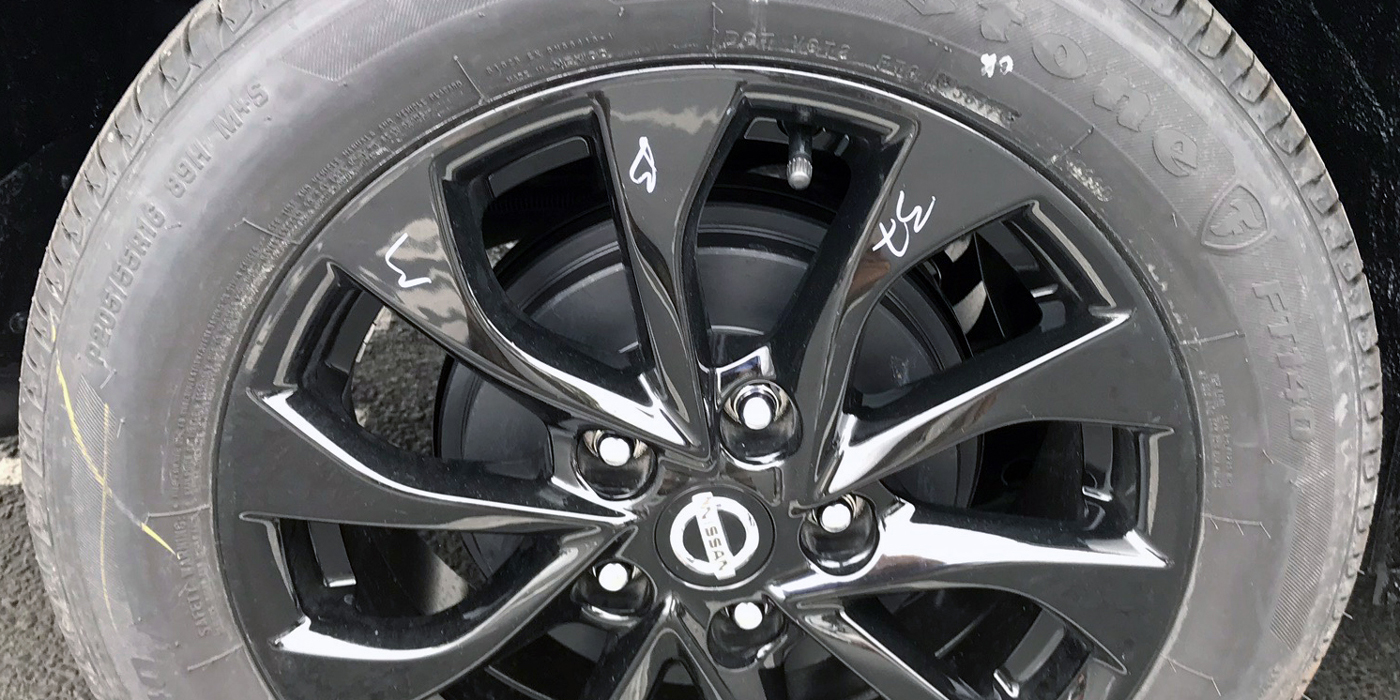When Did Nissan Begin the Tire Pressure Monitoring System Tpms With Easy Fill Tire Alert Begin

TPMS
Nissan TPMS Service: Sensors and the Relearn Process
Never assume that the failure of a sensor to register means that the sensor has failed. Sensors are sensitive to how they are installed on the wheel.
TPMS systems began appearing as a standard feature or option on most Nissan models in 2003. The behavior of the TPMS systems is very consistent across all Nissan models, with the possible exception of the 2006-2008 Quest, an oddball that came with the PAX tire system.
TPMS Light Diagnostics
The most common complaint you will get in your shop is low inflation. If you get a Nissan in your shop where the light stays illuminated, it is an indication that the system is operating normally and has detected a low tire. The first procedure should be to inflate the tires to the specified pressure and drive at speeds above 16 mph for at least three minutes to turn the light off.
If the system is malfunctioning, the light will flash for one minute and then stay on. The pattern of the flashing can indicate if a specific sensor is not activated (ID not present in the module). However, this will not indicate sensor malfunctions like low battery voltage, transmitter loss of signal or another system malfunction. Retrieving this data requires a scan tool that can communicate with the Body Control Module (BCM).
Sensor Operation
Nissan uses TPMS sensors from TRW, Continental, Schrader and Pacific. Most Nissan TPMS systems use a single receiver that detects signals from the four sensors (five if the spare tire has a sensor). The sensor transmits the ID and pressure information at specified intervals or if a rapid deflation event is detected. The sensors have small accelerometers that trigger operation when the vehicle is moving.
The receiver knows where the sensor is located by the transmitted ID number and matches it to the number stored in the receiver module. The sensor may also transmit battery information if the voltage is below a specified level.
Never assume that the failure of a sensor to register means that the sensor has failed. Sensors are sensitive to how they are installed on the wheel. Changes in the mounting position of the sensor can interfere with the activation tool as well as the sensor's transmission. Always make sure the sensor's body is parallel to the wheel.
The 'Corporate' Relearn
Most Nissans require the use of an enhanced/factory scan tool or dedicated TPMS tool, unlike some domestic systems where a relearn procedure can be performed by just pressing a few buttons on a key fob. The tool must be able to talk to the BCM through the OBD II port to initiate a learning mode or input sensor IDs.
This is sometimes called a "corporate" TPMS relearn procedure because it once could only be performed with an OE scan tool. But now there are aftermarket tools and software that can perform the task.
With some tools, it is possible to excite the sensor with a low-frequency signal and record the information with the tool. The information can then be programmed into the TPMS module through the OBD II connection.
Advanced Diagnostics
The receiver for the system is typically located under the dash. Depending on the model, the system may or may not share the antenna with the keyless entry system.
The BCM communicates with the instrument cluster through the CAN bus to turn on the TPMS light or display the tire pressures on the driver information center.
If you are pulling "no communication" codes, the TPMS problem may be a symptom of a larger issue. For example, if the BCM is not able to communicate with the ABS or transmission module needed to determine vehicle speed, the TPMS system will not operate and turn on the light.
It is estimated that more than 18 million Nissans are equipped with TPMS systems, representing a significant service opportunity for your shop. Trying to get around the investment in a proper TPMS tool by grounding wires under the dash is not a practical or efficient practice for a professional shop.
In 2012, Nissan started to roll out the Easy Fill feature for consumers. By the 2018 model year, the system was standard. The system uses hazard lights and the horn to alert the driver a tire has been inflated to the correct pressure.
Here is the step-by-step procedure:
- First, park the vehicle and apply the parking brake.
- Leave the ignition on (accessory mode) but keep the engine off.
- As you start to fill a tire, the exterior lights will flash to indicate that the system is monitoring the change in pressure.
- Once the tire meets the correct pressure, the horn will go off to tell you it's done.
- If the tire is over-inflated, the horn will sound again, and the hazard lights will flash three times.
Check out the rest of the November digital edition of Tire Review here.

Source: https://www.tirereview.com/nissan-tpms-service-sensors/
0 Response to "When Did Nissan Begin the Tire Pressure Monitoring System Tpms With Easy Fill Tire Alert Begin"
Postar um comentário